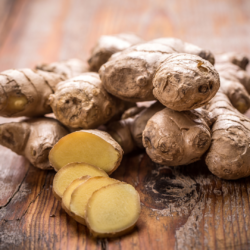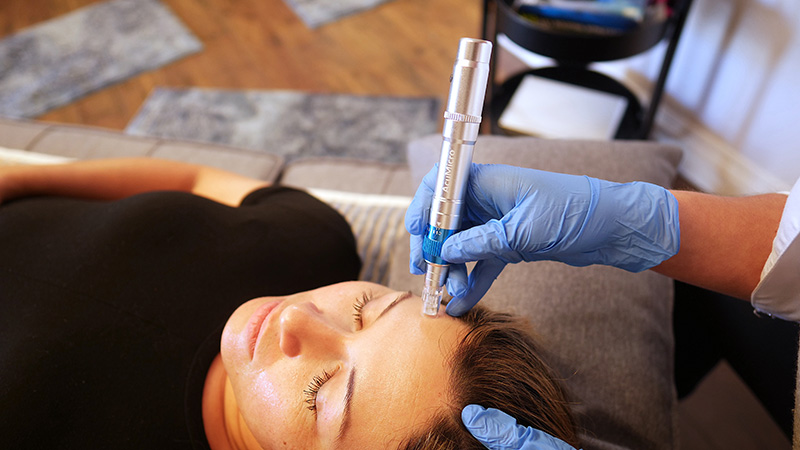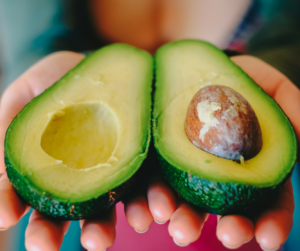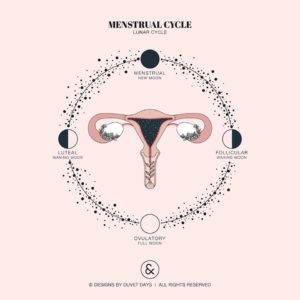Traditional Chinese Medicine can support you through your fertility journey and beyond into pregnancy and postpartum. If you are just beginning your journey, know that Chinese Medicine is an excellent complement to optimize fertility. On the other hand, if you are feeling the frustration and even devastating effects of month after month of negative pregnancy tests and are looking for more support or if you are beginning the process of working with a reproductive endocrinologist, consider adding Chinese medicine to your journey.
Yes, Chinese Medicine can help bring balance to the menstrual cycle to optimize fertility but it can also be used to support assisted reproductive treatments like intrauterine insemination (IUI), in-vitro fertilization (IVF) for both donor, non-donor cycles, fresh or frozen cycles, as well as controlled endometrial development. Often the medications used in these treatments can be very hard on the body and cause physical and mental discomfort. There is help.
Through the use of acupuncture (needling), moxibustion (heat therapy), diet and lifestyle recommendations, Chinese Medicine will help to support your reproductive cycle. It promotes or may help to establish rhythm if cycles are irregular, support regular ovulation, and optimal length for follicular and luteal phases. It will help support and prevent symptoms of estrogen dominance, low progesterone, support patients experiencing PMDD and reduce PMS symptoms. It will help to decrease adverse effects of symptoms from the medication, improve positive outcomes throughout a medicated cycle, ensure the uterine lining is thick and ready for implantation, improve blood flow to the uterus, decrease stress and anxiety, and support hormonal balance with or without ART methods involved.
So, you may be thinking, what does treatment look like…
We begin the initial visit with a very detailed intake no matter where you are in your journey, meeting you and your partner where you are at and developing a treatment plan tailored specifically for you. The treatment plan is always being monitored and adapted to your needs and in relation to where you are at in your menstrual cycle or where you are at in your ART journey. We include acupuncture treatments that are supporting each particular phase you are in. For example, in the menstrual phase the aim is to move blood, reduce pain and inflammation, clear heat, and support the body with any co-occurring symptoms which may develop. In the follicular phase the focus is on building yin, supporting follicular development, while the body does the hard work of preparing for ovulation and ensuring the lining is thickening and ready for implantation in the luteal phase. During ovulation we focus on the transition from the yin phase of the cycle to the yang phase of the cycle; we encourage more qi and blood flow to the reproductive organs at this time as well when so much is happening. During the luteal phase we encourage/build yang qi, progesterone, and help to support the body with calming the mind and reducing stress, and gentle movement and blood flow to the reproductive organs.

Throughout this process we encourage you to consume foods that nourish your body and organs of digestion in Chinese medicine (spleen and stomach), foods that nourish the kidneys and the jing (or essence), and nourish blood. Often this looks like warm cooked foods that are anti-inflammatory, prioritizing bone broths, soups, stews, omega 3 rich foods, fermented foods, and limiting raw cold foods and avoiding greasy or fried foods. We examine what supplements are being taken and pare it down to focus on nutrients that support preconception health, reducing stress, and supporting a healthy pregnancy. This includes a prenatal vitamin that contains folate or folic acid, b vitamins, and minerals. Magnesium and B vitamins support stress and the nervous system. Nutrients to support a growing baby and brain health such as fish oil and choline, and vitamin D3 for hormone support and immune function. Focusing on getting as much as possible through food and nutrition first and then filling in gaps with supplements if needed.
While Chinese Medicine and Western medicine view reproductive health through different lenses, it is incredibly helpful to apply the framework of Chinese Medicine over what is happening at a physiological level. This includes patterns that arise in your basal body temperature chart, how hormone imbalances may be impacting your individual cycle and body (ie what symptoms are showing up), any diagnosed medical conditions such as PCOS, POI,PMDD, and endometriosis to name a few. Symptoms and signs showing up throughout the cycle, and using a whole symptoms approach. We support the channels/vessels and organ systems involved and help restore balance in the body with gentle manipulation and support.
If you’re interested in seeing how Chinese medicine can support your journey, we are here and would love to work with you on this incredible journey!







 Are you preparing for an IVF cycle? Whether you’re just beginning the conversation with a reproductive endocrinologist at your fertility clinic or if you’ve already started stimulation medication, acupuncture can support you and improve your success rate. This can be a time of high stress and emotion, Chinese medicine can provide you with an extra level of support on many levels. Not only will acupuncture help to calm your mind during this time, it will also help increase your chance of conceiving, reduce adverse reactions to medications, and promote a healthy endometrial lining for implantation.
Are you preparing for an IVF cycle? Whether you’re just beginning the conversation with a reproductive endocrinologist at your fertility clinic or if you’ve already started stimulation medication, acupuncture can support you and improve your success rate. This can be a time of high stress and emotion, Chinese medicine can provide you with an extra level of support on many levels. Not only will acupuncture help to calm your mind during this time, it will also help increase your chance of conceiving, reduce adverse reactions to medications, and promote a healthy endometrial lining for implantation.  Have you seen
Have you seen  I’d like to address a few things that came up for me as I read the article referenced above. Oral and hormonal contraceptives were introduced in the early 60’s as a way to prevent conception and control family size. In that time infertility was less common. Today, it is a whole other story. Now it is used to prevent conception, decrease unwanted menstrual symptoms and “treat” or “fix” diagnosed menstrual conditions. These menstrual conditions are serious and need to be seen as what they are, the body showing signs that need to be addressed, not covered up. These conditions often accompany severe symptoms that are debilitating for many women. These conditions show up in my office every day and often are the very things that prevent many of my patients from easily conceiving when they decide to stop taking their contraceptive after years of use. “The Pill” doesn’t fix the problem, it is only a bandaid. It also causes your ovaries to shrink, thins the lining of your uterus, and may worsen hormonal imbalance.
I’d like to address a few things that came up for me as I read the article referenced above. Oral and hormonal contraceptives were introduced in the early 60’s as a way to prevent conception and control family size. In that time infertility was less common. Today, it is a whole other story. Now it is used to prevent conception, decrease unwanted menstrual symptoms and “treat” or “fix” diagnosed menstrual conditions. These menstrual conditions are serious and need to be seen as what they are, the body showing signs that need to be addressed, not covered up. These conditions often accompany severe symptoms that are debilitating for many women. These conditions show up in my office every day and often are the very things that prevent many of my patients from easily conceiving when they decide to stop taking their contraceptive after years of use. “The Pill” doesn’t fix the problem, it is only a bandaid. It also causes your ovaries to shrink, thins the lining of your uterus, and may worsen hormonal imbalance.  Your thyroid health, fertility, a healthy pregnancy, and postpartum are deeply intertwined. And unfortunately, the detailed care and information we receive as women around this matter is lacking. I see this nearly everyday in my practice and have experienced this discrepancy first hand at my last well woman care visit when I received my blood work results from routine lab work. (if you’re interested in knowing what thyroid tests to ask for consider working with a provider that specializes in thyroid support). My low functioning thyroid was not even addressed by my physician after my visit, and I know I am not the only one this is happening to. The awareness around this is changing slowly and more and more providers are paying closer attention, but when it comes to our thyroid health we need to know what to ask for and how to receive proper treatment. This starts with educating ourselves.
Your thyroid health, fertility, a healthy pregnancy, and postpartum are deeply intertwined. And unfortunately, the detailed care and information we receive as women around this matter is lacking. I see this nearly everyday in my practice and have experienced this discrepancy first hand at my last well woman care visit when I received my blood work results from routine lab work. (if you’re interested in knowing what thyroid tests to ask for consider working with a provider that specializes in thyroid support). My low functioning thyroid was not even addressed by my physician after my visit, and I know I am not the only one this is happening to. The awareness around this is changing slowly and more and more providers are paying closer attention, but when it comes to our thyroid health we need to know what to ask for and how to receive proper treatment. This starts with educating ourselves.  What foods best support your fertility? Ideally, most of the foods we consume should be organic as well as pesticide and chemical free and in their whole and unprocessed form. If all organic is cost prohibitive you can focus on keeping the ‘dirty dozen’ organic, as well as 100% organic meat, eggs and full fat dairy. You can check the
What foods best support your fertility? Ideally, most of the foods we consume should be organic as well as pesticide and chemical free and in their whole and unprocessed form. If all organic is cost prohibitive you can focus on keeping the ‘dirty dozen’ organic, as well as 100% organic meat, eggs and full fat dairy. You can check the 